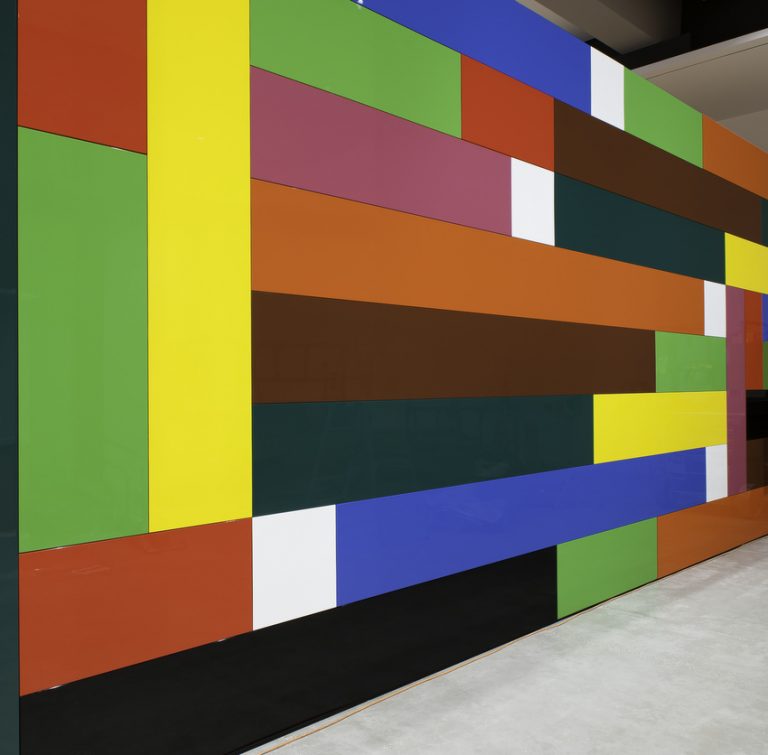We acknowledge the Traditional Owners of the land on which the Queensland Art Gallery | Gallery of Modern Art stands and recognise the creative contribution First Australians make to the art and culture of this country.

Michael Parekowhai / New Zealand b.1968 / Home Front 2015 / Aluminium, polyurethane paint / Two walls: 404 x 2295cm (each) / Gift of the artist and Michael Lett through the Queensland Art Gallery | Gallery of Modern Art Foundation 2015 / Collection: Queensland Art Gallery | Gallery of Modern Art / © Michael Parekowhai
Michael ParekowhaiHome Front 2015
Not Currently on Display
Cuisenaire (pronounced ‘kweezuhnair’) rods were invented by Belgian teacher Georges Cuisenaire. As a visual language, each rod colour and length represented a different unit of value. They were used in primary schools in Australia and New Zealand to teach children mathematics. In New Zealand, they are also used to teach Te Reo Māori (the Māori language).
In Home Front 2015, the Cuisenaire rods are used as building blocks to make 4-metre-high and 23-metre-long walls that divide the gallery space into thirds. Although Parekowhai has worked with Cuisenaire rods in the past, using their rich colours and rectilinear shapes to create sculptures and walls, this is the first time he has used them to create the feeling of a home interior.
Michael Parekowhai is one of New Zealand’s most important contemporary artists, showing regularly in New Zealand and internationally in major exhibitions including the Asia Pacific Triennial of Contemporary Art (APT) in 1999 and 2006.
Parekowhai is known for his witty, larger-than-life sculptures, photographs and installations. Parekowhai was born in Porirua in 1968, of European (pākehā) and Māori (Ngāti Whakarongo) descent.
In 1990, he completed a Bachelor of Fine Arts at the University of Auckland’s Elam School of Fine Arts, and received a teaching diploma from the Auckland College of Education. He returned to Elam and in 2000 obtained a Master of Fine Arts.
His public artwork The World Turns 2011–12, a lifesized bronze sculpture of an elephant and native Australian kuril (water rat) is located near the riverfront at GOMA.
Discussion Questions
1. How do these walls differ to a wall inside your home?
2. Consider the title Home Front. What do you think Parekowhai could be suggesting by using colourful blocks in this installation?
Activities
1. Think about the purpose of walls and how they have been used in history. Research different walls online and why they are famous (e.g. the Berlin Wall, the Great Wall of China, the Wailing Wall).
2. Choose a small object or children’s toy and assign a symbolic meaning to it in order to address a topic of interest. For example, dice may represent a risk, a plastic dinosaur may represent evolution. Make an artwork using multiples of the object. Multiples could be produced digitally or with traditional sculptural media. Consider stacking, grouping, up- and down-scaling.